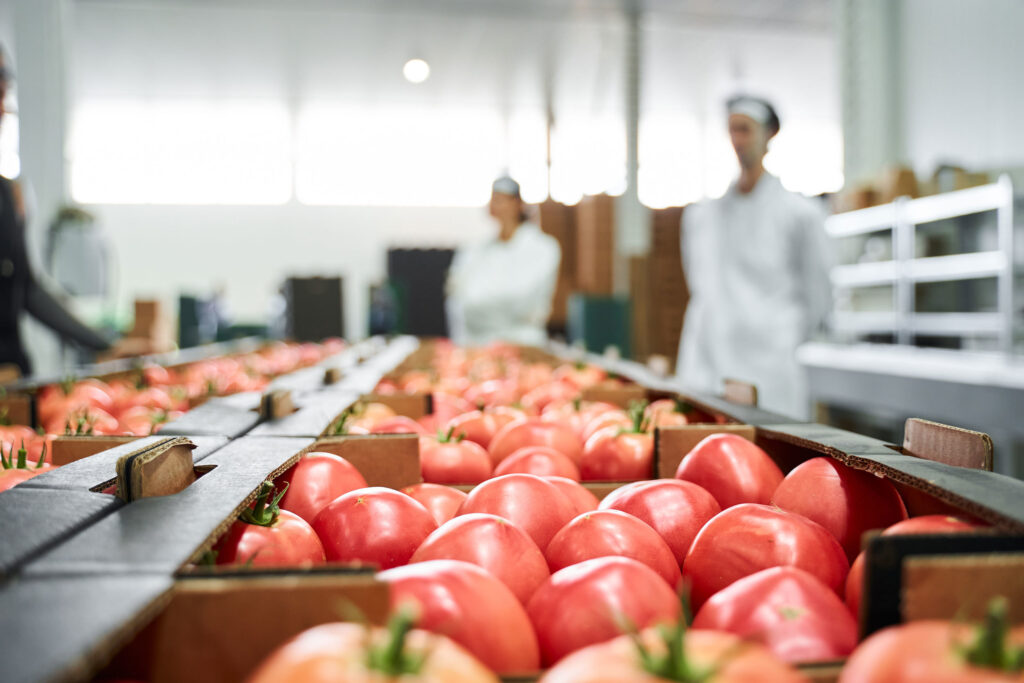Choosing the Right Food Safety and Compliance System for Your Needs
In today’s fast-paced food industry, ensuring safety and compliance is paramount. With evolving regulations and increasing consumer awareness, businesses must adopt robust food safety systems. However, selecting the right system can be daunting. This article aims to guide you through the essential considerations for choosing a food safety and compliance system tailored to your specific needs.
Understanding Food Safety and Compliance Systems
Food safety and compliance systems are designed to help businesses manage and maintain food safety standards. These systems encompass a variety of processes, tools, and practices that ensure food products are safe for consumption and meet regulatory requirements. From tracking ingredients to monitoring hygiene practices, a comprehensive system can significantly reduce risks associated with foodborne illnesses. The implementation of such systems not only protects consumers but also enhances the overall quality and integrity of food products, fostering a culture of safety that resonates throughout the entire supply chain.
Choosing the right food safety and compliance system is a critical decision for any business in the food industry. By understanding your specific needs, evaluating available options, and implementing the system effectively, businesses can ensure compliance and protect consumer health. Continuous monitoring and improvement, along with the right partnerships, will further enhance the effectiveness of your food safety practices.
The Importance of Compliance
Compliance with food safety regulations is not merely a legal obligation; it is a fundamental aspect of maintaining consumer trust. Non-compliance can lead to severe consequences, including fines, legal action, and damage to a brand’s reputation. Therefore, implementing a reliable food safety system is essential for any business operating within the food sector. Moreover, in an era where consumers are increasingly aware of food sourcing and safety issues, businesses that prioritise compliance often find themselves at a competitive advantage, as they can market their products as safe and responsibly sourced.

Key Components of a Food Safety System
A robust food safety system typically includes several key components:
- HACCP (Hazard Analysis Critical Control Point): A systematic approach to identifying and managing food safety hazards.
- Traceability: The ability to track the journey of food products from farm to fork.
- Training and Education: Ensuring staff are well-informed about food safety practices.
Each of these components plays a crucial role in ensuring that food safety protocols are effectively implemented and maintained. For instance, HACCP not only helps in identifying potential hazards but also establishes critical control points at various stages of production, allowing for timely interventions. Traceability, on the other hand, empowers businesses to swiftly respond to any food safety issues by pinpointing the source of contamination, thereby minimising the impact on consumers. Training and education are equally vital, as a well-informed workforce is more likely to adhere to safety protocols, ensuring that food handling practices meet the highest standards of safety and hygiene. Additionally, regular refresher courses and updates on new regulations can keep staff engaged and informed, further enhancing the overall effectiveness of the food safety system.
Identifying Your Specific Needs
Before selecting a food safety and compliance system, it is vital to assess your specific needs. Each business is unique, and factors such as size, type of food products, and operational processes will influence the choice of system.

Business Size and Complexity
Smaller businesses may require a simpler system that covers the basics of food safety, while larger organisations with multiple locations may need a more comprehensive solution. Consideration of the scale and complexity of operations will help in identifying the right system. For instance, a small café might benefit from a straightforward checklist-based approach to ensure that food handling practices are consistently followed, whereas a large food manufacturing plant may necessitate a sophisticated software solution that tracks compliance across various departments and locations, integrating real-time data analytics to monitor safety protocols effectively. Find more about integrating on https://annalskemu.org/journal/index.php/annals/article/view/5618
Type of Food Products
The nature of the food products being handled also plays a significant role in determining the appropriate system. For instance, businesses dealing with perishable goods may require more stringent monitoring and compliance measures compared to those dealing with shelf-stable products. Additionally, the specific regulatory requirements for different food categories can vary widely; for example, businesses involved in the production of meat or dairy products are often subject to more rigorous inspections and standards than those dealing with dry goods. Therefore, understanding these nuances is essential for ensuring that the chosen system not only meets legal obligations but also aligns with best practices in the industry.
Operational Processes
Understanding the operational processes within your business is crucial. A system that integrates seamlessly with existing workflows can enhance efficiency and reduce the likelihood of errors. Assessing how food safety practices fit into daily operations will aid in selecting a system that complements your business model. Furthermore, it is important to consider how staff training and engagement will be affected by the system you choose. A user-friendly interface that provides intuitive guidance can facilitate better adherence to safety protocols among employees, thereby fostering a culture of compliance and accountability. Regular feedback from staff on the system’s usability can also inform ongoing adjustments, ensuring that it remains effective as your business evolves.
Evaluating Available Systems
Once you have a clear understanding of your specific needs, the next step is to evaluate the available food safety and compliance systems. This process involves researching different options and comparing their features, benefits, and costs.
Features to Look For
When evaluating systems, consider the following features:
- User-Friendly Interface: A system that is easy to navigate will encourage staff to engage with it effectively.
- Customisation Options: The ability to tailor the system to your specific requirements can enhance its effectiveness.
- Reporting and Analytics: Robust reporting tools can provide insights into compliance status and areas for improvement.
These features can significantly impact the usability and effectiveness of the system in maintaining food safety standards.
Cost Considerations
Budget is a critical factor in the decision-making process. While it may be tempting to opt for the cheapest option, it is essential to consider the long-term value of the system. Investing in a quality food safety system can save money in the long run by reducing the risk of non-compliance and associated penalties.
Implementation and Training
Once a system has been selected, the next phase is implementation. This step is crucial for ensuring that the system is effectively integrated into the business operations.
Planning for Implementation
Developing a clear implementation plan is essential. This plan should outline the steps involved in rolling out the system, including timelines, responsibilities, and resources required. Engaging staff early in the process can also facilitate smoother adoption.
Training Staff
Training is a vital component of successful implementation. Staff must be well-versed in how to use the system and understand the importance of food safety protocols. Regular training sessions can help reinforce best practices and ensure ongoing compliance.
Monitoring and Continuous Improvement
After implementation, it is crucial to establish a system for monitoring compliance and performance. Regular assessments can identify areas for improvement and ensure that the system remains effective. To learn more about assessments click here.
Regular Audits
Conducting regular audits of food safety practices can help identify potential weaknesses in the system. These audits can be internal or external and should focus on evaluating compliance with established protocols.
Feedback Mechanisms
Establishing feedback mechanisms allows staff to report issues or suggest improvements. Encouraging open communication fosters a culture of safety and compliance, ensuring that everyone is invested in maintaining high standards.
Choosing the Right Partner
In some cases, businesses may choose to partner with a third-party provider for their food safety and compliance needs. Selecting the right partner can enhance the effectiveness of your system.
Evaluating Potential Partners
When considering a third-party provider, it is essential to evaluate their experience, reputation, and the services they offer. Look for providers with a proven track record in the food industry and those who understand the specific challenges faced by your business.
Building a Collaborative Relationship
A successful partnership requires open communication and collaboration. Establishing clear expectations and maintaining regular contact can help ensure that both parties are aligned in their goals for food safety and compliance.
Conclusion
Ultimately, investing in a robust food safety and compliance system is not just about meeting regulatory requirements; it is about fostering a culture of safety and quality that resonates with consumers and builds trust in your brand.
Learn more on: How to Meet Food Safety Regulatory Compliance Every Time


